Welcome to CELS WordPress Sites. This is your first post. Edit or delete it, then start writing!


An IIT student team placed fourth in an annual 48-hour competition that challenges young computer scientists to tune and run a series of high-performance computing codes, non-stop, on a small cluster they build from their own design. The team of 5 computer science undergrads and one junior from Naperville Central High School competed with 8 other teams from around the world at the Student Cluster Competition at SC’15 in Austin, TX.
This year’s 5-node cluster design was built using Intel components. William Scullin and Ben Allen, both HPC systems administrators at ALCF, and Ioan Raicu, assistant professor of computer science at IIT and a guest researcher in Argonne’s MCS Division, worked closely with the team as coaches and mentors. Argonne and Intel provided technical and financial support. To read more about the competition, click here.
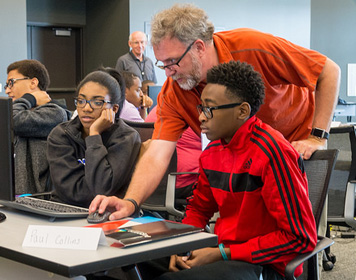
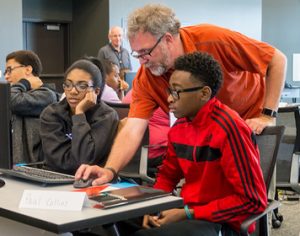 In July, I participated in Argonne’s first summer coding camp, a computer science education opportunity attended by 42 local high school students and organized in partnership with the DuPage County chapter of the Afro-Academic, Cultural, Technological and Scientific Olympics (ACT-SO).
In July, I participated in Argonne’s first summer coding camp, a computer science education opportunity attended by 42 local high school students and organized in partnership with the DuPage County chapter of the Afro-Academic, Cultural, Technological and Scientific Olympics (ACT-SO).
A small team of Argonne computer scientists designed and taught the four-day programming curriculum, which could serve as a future model for teacher training and classroom implementation. It’s the start of good things to come in this important outreach area.
Read the article here.
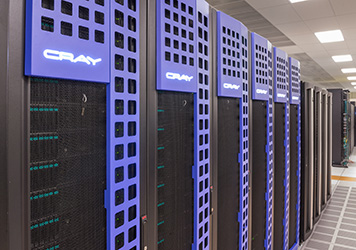
 Today at ALCF, a powerful new cluster with terabytes of RAM and GPU memory stands ready to meet our user community’s data analysis needs. Cooley, the follow-on system to Tukey, will support more exploration capabilities, including in-situ analysis and unprecedented volume-rendered visualization. Cooley shares the same software environment, network, and file systems as ALCF’s supercomputer, Mira, enabling direct access to Mira-generated results.
Today at ALCF, a powerful new cluster with terabytes of RAM and GPU memory stands ready to meet our user community’s data analysis needs. Cooley, the follow-on system to Tukey, will support more exploration capabilities, including in-situ analysis and unprecedented volume-rendered visualization. Cooley shares the same software environment, network, and file systems as ALCF’s supercomputer, Mira, enabling direct access to Mira-generated results.
An article about the new system and links to Cooley user documentation can be found here.

After much anticipatio n, the Department of Energy recently announced that industry partners Intel and Cray would be delivering Argonne’s next supercomputer, Aurora. The new system will be a first-of-its-kind product from the market-leading chipmaker and the renowned computer manufacturer, and is expected to be at least 18 times more powerful than the Argonne Leadership Computing Facility’s current system, Mira.
n, the Department of Energy recently announced that industry partners Intel and Cray would be delivering Argonne’s next supercomputer, Aurora. The new system will be a first-of-its-kind product from the market-leading chipmaker and the renowned computer manufacturer, and is expected to be at least 18 times more powerful than the Argonne Leadership Computing Facility’s current system, Mira.
Mira has lots of science to accomplish between now and the time Aurora arrives on the scene in 2018, but the planning phase officially kicked off this week with a call for proposals for Aurora’s pre-production system, Theta.
The Early Science program for Theta is accepting proposals through May 22. Selected projects will get early access to the machine and support from ALCF staff and postdocs. Look for Aurora’s Early Science Program call for proposals next spring.
Summer training to the extreme
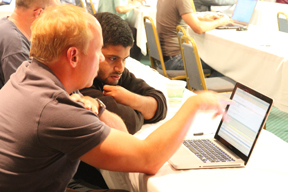
 Applications are now being accepted for two noteworthy summer training programs in Chicago aimed at cultivating future computational scientists. Both opportunities offer intensive, hands-on training on multiple topics, and access to leading experts currently working in the extreme-scale computing space.
Applications are now being accepted for two noteworthy summer training programs in Chicago aimed at cultivating future computational scientists. Both opportunities offer intensive, hands-on training on multiple topics, and access to leading experts currently working in the extreme-scale computing space.
BigDataX is a Research Experiences for Undergraduates (REU) site in Chicago. The program has four mentors at two institutions, IIT and University of Chicago, with a variety of complementing expertise from theory to programming languages to distributed systems. Deadline March 17, 2015.
Argonne Training Program on Extreme-Scale Computing (ATPESC) is Argonne’s intensive two-week summer training program on extreme-scale computing. Doctoral students, postdocs, and computational scientists interested in conducting CS&E research on large-scale computers are encouraged to apply. Deadline April 3, 2015.
Happy New Year!
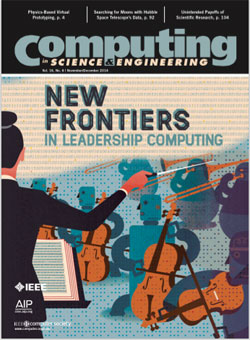

New Frontiers in Leadership Computing, part two of the CiSE Special Issue on Leadership Computing, is out and features four more boundary-pushing examples of research at the high-end of scientific computing: a scalable solver for aerospace industry work, a novel method to model geological flow and transport processes, recent modeling advances in the domain of accelerator science, and a look at optimizations made to two features of a laser-plasma interaction code that enable scaling to a million or more processes.
Guest editing this special issue has been especially gratifying and was made possible by the enthusiasm and support of several individuals, including CiSE Editor-in-Chief George Thiruvathukal, who championed this topic from the start. I’m pleased to announce that Jim Hack and I will continue serving in this capacity in 2015. We will use our column space to explore topics such as training the new generation of HPC users and what’s going to be inside the next-generation of DOE leadership machines. I’m excited to be part of this editorial team and look forward to the coming year.
Enter the parallel workflow
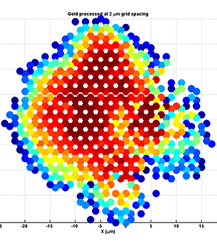
 Experimentalists from all over the world visit Argonne each year to use the ultra-bright X-ray photon beams produced here to peer inside materials. Research teams with beamline reservations, or ‘beamtime,’ are expected to set up, calibrate the detector, and man their experiments round-the-clock for days at a stretch. Any problem with the experimental setup is revealed only during the analysis phase, often rendering the entire dataset useless. Even a seemingly minor thing like a bad cable can cause terabytes of useless data. That’s a problem.
Experimentalists from all over the world visit Argonne each year to use the ultra-bright X-ray photon beams produced here to peer inside materials. Research teams with beamline reservations, or ‘beamtime,’ are expected to set up, calibrate the detector, and man their experiments round-the-clock for days at a stretch. Any problem with the experimental setup is revealed only during the analysis phase, often rendering the entire dataset useless. Even a seemingly minor thing like a bad cable can cause terabytes of useless data. That’s a problem.
A recent collaborative effort involving high-performance computing is giving beamline users the ability to conduct fast ‘in-beam’ analysis of their initial data so that they can find and correct problems early on. Here’s a recent story about how computational methods and infrastructure at Argonne are boosting beamline performance and accelerating discoveries in materials science.

 Advances in Leadership Computing, the first of a two-part CiSE Special Issue on Leadership Computing, is now available online. In two consecutive publications, this special issue will explore nine projects that are using leadership systems to expand the frontiers of their fields.
Advances in Leadership Computing, the first of a two-part CiSE Special Issue on Leadership Computing, is now available online. In two consecutive publications, this special issue will explore nine projects that are using leadership systems to expand the frontiers of their fields.
The September/October issue features five articles on topics that include simulating the Universe, enhancing the understanding of wall-bounded turbulence, devising an approach that computes the energy dispatch of electrical power grid systems under uncertainty, gleaning new insights into fusion plasma turbulence, and a recent advance in quantum-mechanical computational methods that can be used to search for optimal materials such as batteries and photo-electrochemical cells.
Bug data is big data
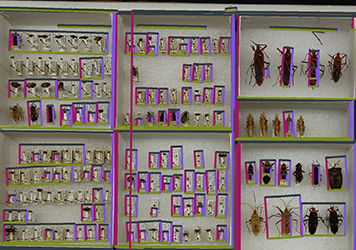
 Digitized museum collections are the next ‘big data’ dataset
Digitized museum collections are the next ‘big data’ dataset
The Field Museum of Natural History in Chicago holds a massive pinned insect collection of roughly 4.5 million specimens, dating back at least a century and contributed by entomologists and private collectors from all over the world, including scientists at the Field. The collection currently occupies over ten thousand drawers of new high-density storage that can be opened as needed for study.
The collection, which continues to grow, represents a wealth of data for studies of taxonomy, biodiversity, invasive species and so on, and a significant public investment in research and applied environmental science. Digitizing the collection would not only preserve it, but also make it accessible to such studiers of the collection without having to visit the Field. However, no systems exist for digitizing large collections of objects, making large-scale analysis of the subsets of such collections extremely difficult.
Argonne scientists Mark Hereld and Nicola Ferrier are collaborating with Field Museum associate curator Petra Sierwald to devise an advanced pipeline for high-throughput digitization of the collection using a software-based approach. The bar is high: to digitize a collection this big in one year of 24/7 operations, the average time available to capture a single specimen is 7 seconds. Another challenge is deciphering the labels beneath each pinned specimen– labels that are closely packed, often partially obscured, and in many cases, hand-written. Moreover, the specimens are fragile and can’t be manipulated.
This summer, two students working with Hereld and Ferrier experimented with image-capture techniques to accommodate the different angles needed to quickly sample everything on the labels and extract from the target label information. The image pre-processing methods the team eventually develops will enable automatic reconstruction of label data. The team is working on methods to identify and track the drawers, unit boxes, and individual specimens through the digitization pipeline.
This is a difficult problem. Different approaches are more or less robust at finding correct solutions, depending on lighting, geometry, and details of the object being measured. The team is exploring a range of image analysis and 3D capture techniques, expecting the best solution to be a combination of existing and new algorithms.